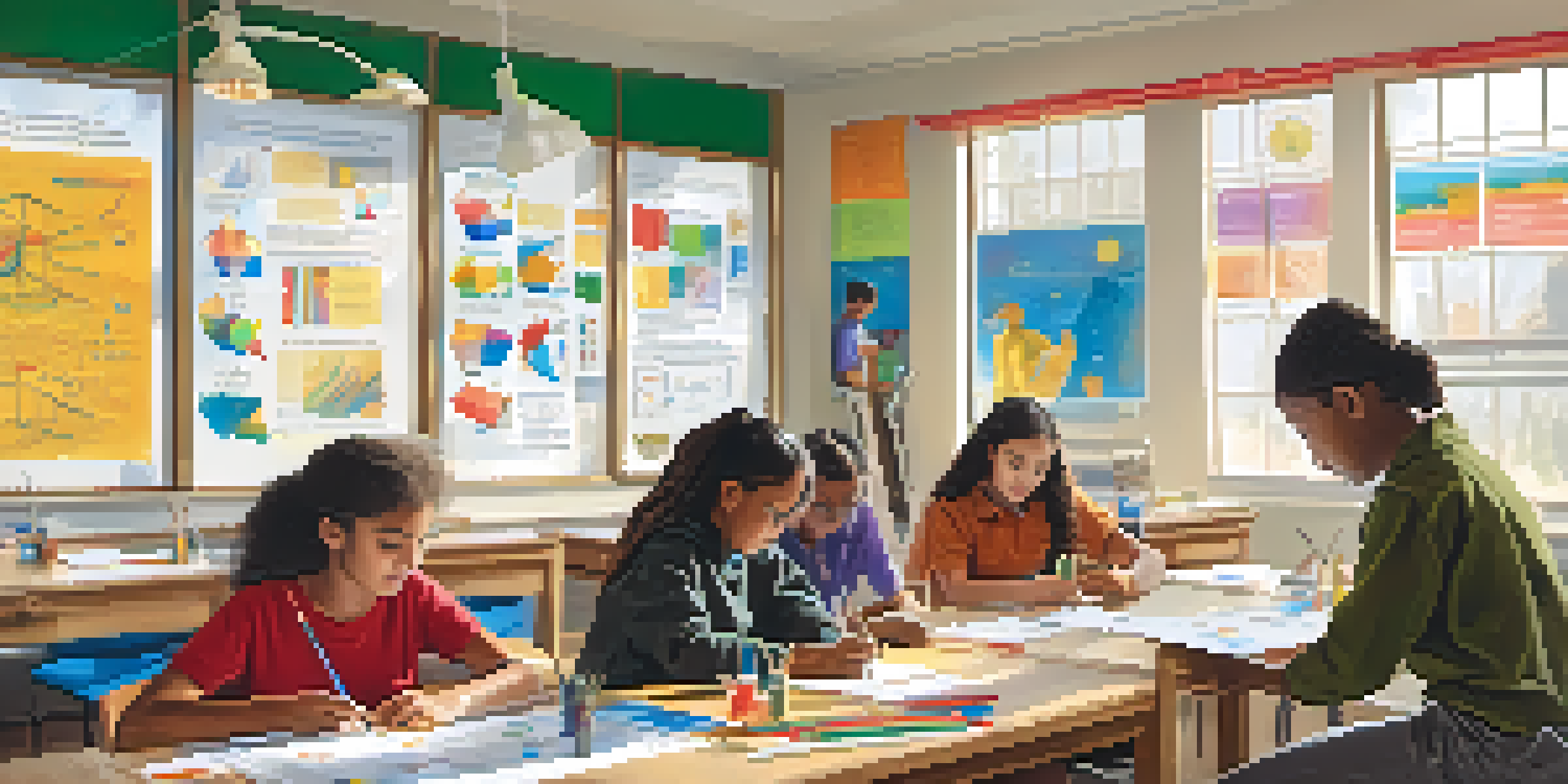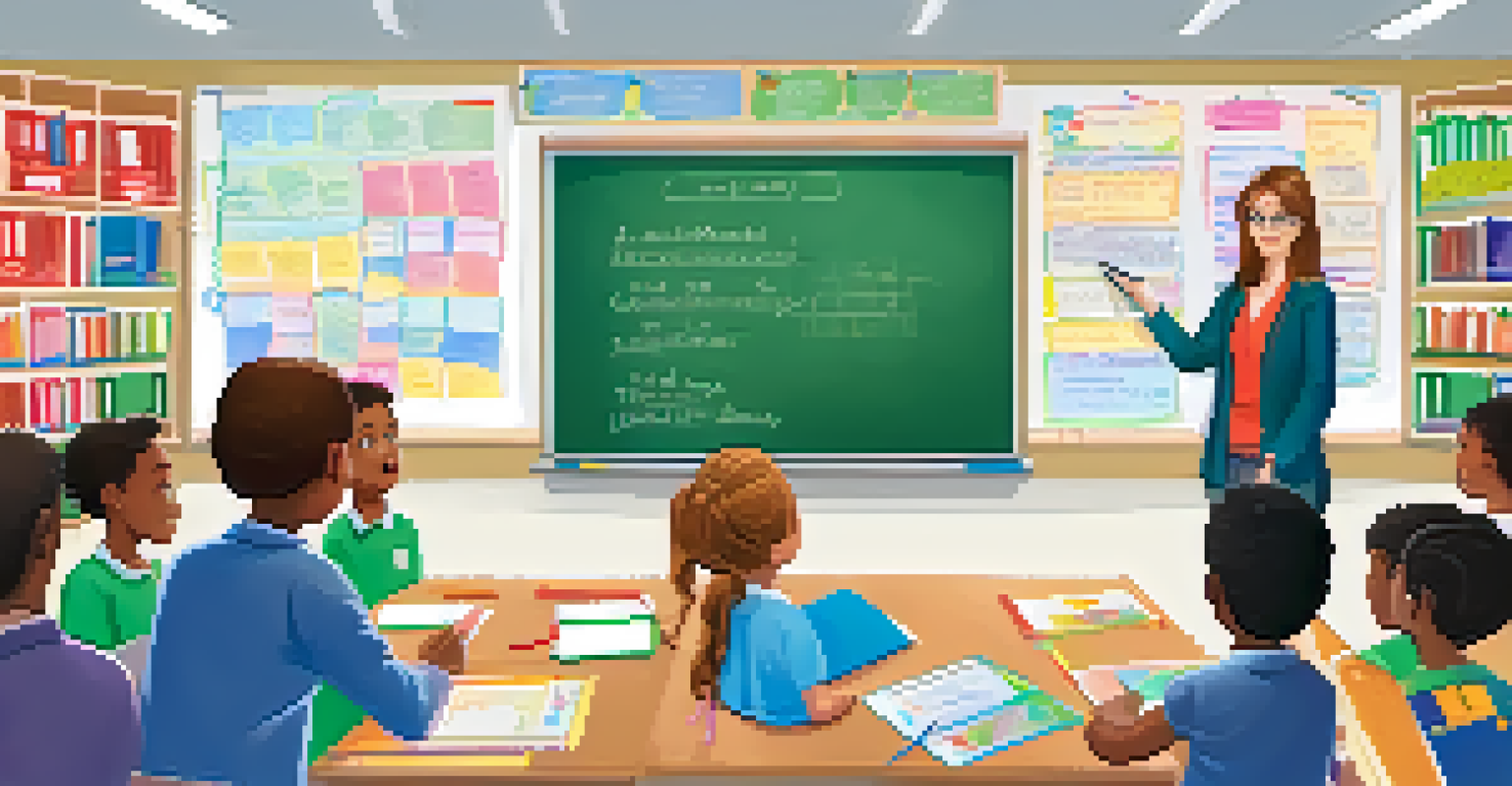How Cognitive Abilities Impact Learning Styles in Students

Understanding Cognitive Abilities in Education
Cognitive abilities refer to the mental skills that we use in the process of acquiring knowledge. These include skills such as problem-solving, reasoning, and memory, which play a significant role in how students learn. For instance, a student with strong analytical skills might excel in subjects like math and science, where logical reasoning is crucial.
Intelligence is not the ability to store information, but the ability to retrieve it.
Moreover, cognitive abilities can vary significantly from one student to another. Some may be more adept at visual learning, while others might thrive through auditory or kinesthetic methods. Recognizing these differences is essential for educators to tailor their teaching strategies effectively.
By understanding cognitive abilities, educators can create an inclusive learning environment. This means adapting lessons to meet the diverse needs of students, ensuring that each individual can engage with the material in a way that resonates with them.
The Connection Between Cognition and Learning Styles
Learning styles are the preferred ways in which individuals process information. They can be influenced by cognitive abilities, leading to various ways students approach learning tasks. For example, a student with strong spatial skills may prefer visual learning techniques, such as diagrams and charts.

In contrast, students with better verbal skills might gravitate toward reading and writing as their primary learning methods. This connection highlights the importance of recognizing and addressing the unique learning styles of each student, as it can significantly impact their academic success.
Cognitive Abilities Shape Learning
Cognitive abilities, such as memory and processing speed, significantly influence how students engage with and understand educational material.
Ultimately, the interplay between cognitive abilities and learning styles can create a more personalized educational experience. When educators consider this relationship, they can foster an environment that encourages all students to reach their full potential.
Types of Cognitive Abilities Affecting Learning
Several cognitive abilities directly influence how students learn. For instance, working memory is crucial for retaining and manipulating information, which is essential for subjects that require multi-step problem-solving. Students with a strong working memory can tackle complex tasks more efficiently.
Everyone is a genius. But if you judge a fish by its ability to climb a tree, it will live its whole life believing that it is stupid.
Additionally, processing speed affects how quickly students can absorb and apply new information. A faster processing speed allows students to engage more actively in classroom discussions and activities, enhancing their overall learning experience. This can lead to increased confidence and participation in the classroom.
Lastly, attention control is another vital cognitive ability that impacts learning. Students with better attention skills can focus on tasks for longer periods, which is particularly beneficial in environments filled with distractions. By nurturing these cognitive abilities, educators can help students improve their learning outcomes.
How Learning Styles Manifest in Students
Learning styles can manifest in various ways, shaping how students interact with material. For example, visual learners often prefer using images, diagrams, and other visual aids to grasp concepts. This preference can lead them to excel in subjects like art and geography, where visual representation is key.
Auditory learners, on the other hand, benefit from listening to lectures or engaging in discussions. They tend to remember information better when it is spoken aloud, making group work and oral presentations effective learning strategies. Understanding these preferences allows educators to incorporate different teaching methods into their curriculums.
Learning Styles Affect Student Success
Recognizing diverse learning styles, including visual, auditory, and kinesthetic, allows educators to tailor their teaching methods to better support individual students.
Kinesthetic learners engage with material through hands-on activities and real-world applications. They thrive in environments where they can move around and actively participate, such as labs or workshops. By recognizing these styles, educators can cultivate a dynamic classroom that caters to all types of learners.
The Role of Teachers in Supporting Diverse Learners
Teachers play a crucial role in recognizing and supporting the diverse learning styles of their students. By observing how students respond to different teaching methods, educators can adjust their approaches to meet individual needs. This flexibility is key to creating a supportive learning environment.
Furthermore, teachers can provide various resources and materials that cater to different cognitive abilities and learning styles. For instance, they might offer visual aids, audiobooks, or hands-on projects, ensuring that every student has access to tools that resonate with them. This variety encourages engagement and enhances understanding.
Finally, fostering open communication with students about their learning preferences empowers them to take charge of their education. When students feel supported and understood, they are more likely to succeed academically and develop a love for learning.
Assessing Cognitive Abilities and Learning Styles
Assessing cognitive abilities and learning styles can be beneficial for both teachers and students. Various assessment tools are available to help educators identify the strengths and preferences of their students. These could range from standardized tests to informal observations during classroom activities.
Understanding a student's cognitive profile allows teachers to tailor their instruction effectively. For example, if a student excels in verbal skills but struggles with visual tasks, a teacher can provide more reading materials and discussions to support that learner. This personalized approach can lead to improved outcomes.
Inclusive Environments Foster Growth
Creating an inclusive learning environment that respects and accommodates various cognitive abilities and learning styles enhances student engagement and success.
Moreover, students benefit from self-assessments that encourage them to reflect on their learning styles and preferences. By understanding how they learn best, students can become advocates for their own education, leading to greater motivation and success in their academic journey.
Creating an Inclusive Learning Environment
Creating an inclusive learning environment is essential for fostering student success. This involves recognizing the diverse cognitive abilities and learning styles present in the classroom. Educators can implement strategies like differentiated instruction, which tailors lessons to meet varying needs.
Additionally, incorporating collaborative learning can help students learn from one another, allowing them to share their unique strengths. Group projects and peer teaching opportunities encourage students to engage with different learning styles, enhancing their overall educational experience.

Finally, promoting a culture of respect and understanding among students fosters a supportive atmosphere. When students appreciate the value of diverse learning styles, they are more likely to collaborate effectively and contribute positively to the classroom community.